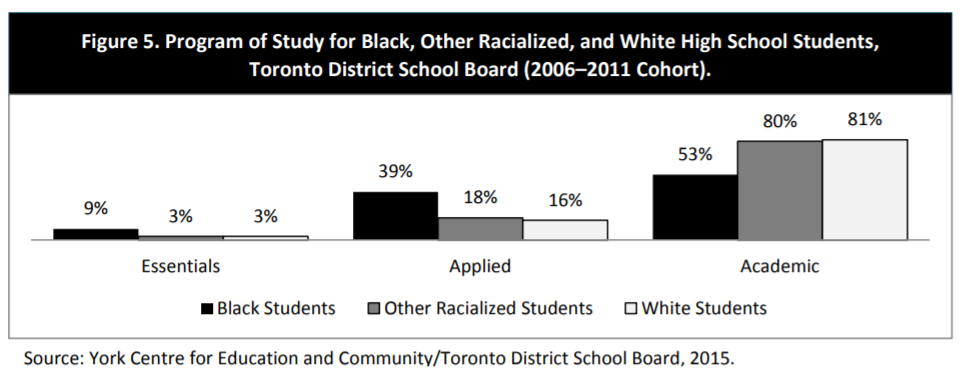End to streaming requires comprehensive plan
After years of calls for change from researchers like Dr. Carl James at York University, and Rob Brown a the TDSB, from groups like CASE and People for Education, and youth organizations such as the Ontario Student Trustees’ Association, and the Toronto Youth Council, Ontario has announced a partial end to streaming in grade 9.
The Minister of Education announced that in 2021, students entering grade 9 will no longer have to choose between applied and academic mathematics. At the time of the announcement, he did not provide concrete information as to how the change will be implemented, or what resources will be provided to support it.
De-streamed schools require targeted supports and resources
Several school boards in Ontario have already made the move to “de-stream” classes. However, they are clear that to be successful, de-streaming requires a wide range of supports. These supports can include much smaller class sizes, extra courses such as Learning Strategies, and increased staff including guidance counsellors, student success teachers and support staff.
Original intention of high school course choices did not match reality
Streaming was introduced in Ontario in 1999 ostensibly to provide more chances for students to succeed. Unfortunately, it had the opposite effect.
The original intention was that students would choose between two types of courses – applied or academic – which would provide similar knowledge delivered in different ways – one more hands-on, with practical, real-world applications, and the other more theoretical or “academic.” It was assumed that students would mix and match courses, taking some applied and some academic courses in grades 9 and 10, and moving freely back and forth between them.
None of these assumptions were realized:
- The majority of students who took one applied course took most of their courses in the applied stream;
- The curriculum was significantly different between applied and academic;
- Many students (and educators) assumed that applied courses were easier and designed for students who were struggling;
- Few students
 moved from the applied to the academic stream; and
moved from the applied to the academic stream; and - Most concerning of all, there has been an over-representation of Black, Indigenous and low-income students in applied courses.
Streaming closes doors for students
Students in Ontario are currently required to make the choice between applied and academic courses when they are in grade 8; teachers often play a key role in that choice, making recommendations between the two streams. The choice has an impact far beyond grade 10. It affects which courses students can take in grade 11 and 12, and subsequent choices for post-secondary education and even employment.
The long-term social and financial costs of educational failure are high. Those without the skills to participate socially and economically generate higher costs for health, income support, child welfare and security.
The evidence of problems has been clear for years:
- 47% of principals responding to People for Education’s Annual Ontario School Survey, say that students transfer from applied to academic courses “never” or “not very often.”
- A study by Dr. Carl James and Tana Turner using TDSB student census data found that “Black students were over twice as likely to be enrolled in the Applied program (39% compared with 16% of White and 18% of other racialized students)”
- A 2017 study from the TDSB found that 93% of students in academic programs graduated, compared to 69% of students in applied courses.
- Even though applied courses are intended to lead to college, workplace, and apprenticeships, only 37% of those in an applied programs were accepted into college.
- EQAO data show that students with similar EQAO scores, even poor scores, on grade 6 tests are far more likely to do better in academic than applied courses.
- The proportion of Black students in applied courses in the Peel DSB is double what it should be: Approximately 22% of students taking applied courses in grades 9 and 10 are Black, but the percentage of Black students in the PDSB by racial background in grades 9 and 10 is 10%.
Success will require comprehensive implementation plan and increased resources
Changing streaming policy will require a comprehensive implementation plan. In creating that plan, it is vital that the province learns from boards that have already engaged in this process, and brings all the stakeholders to the table to ensure the plan is feasible and supported with adequate resources. Because streaming involves multiple courses, it will also be vital that the province moves beyond simply de-streaming one course.
Students, educators, support staff, researchers, deans of education, principals, directors of education must all be included in the planning, which must go well beyond token consultation and instead involve real collaboration. To be successful, this new strategy must come with a commitment to provide adequate resources, which may include smaller class sizes for grades 9 and 10, increased support staff, team teaching, as well as changes to teacher education.
